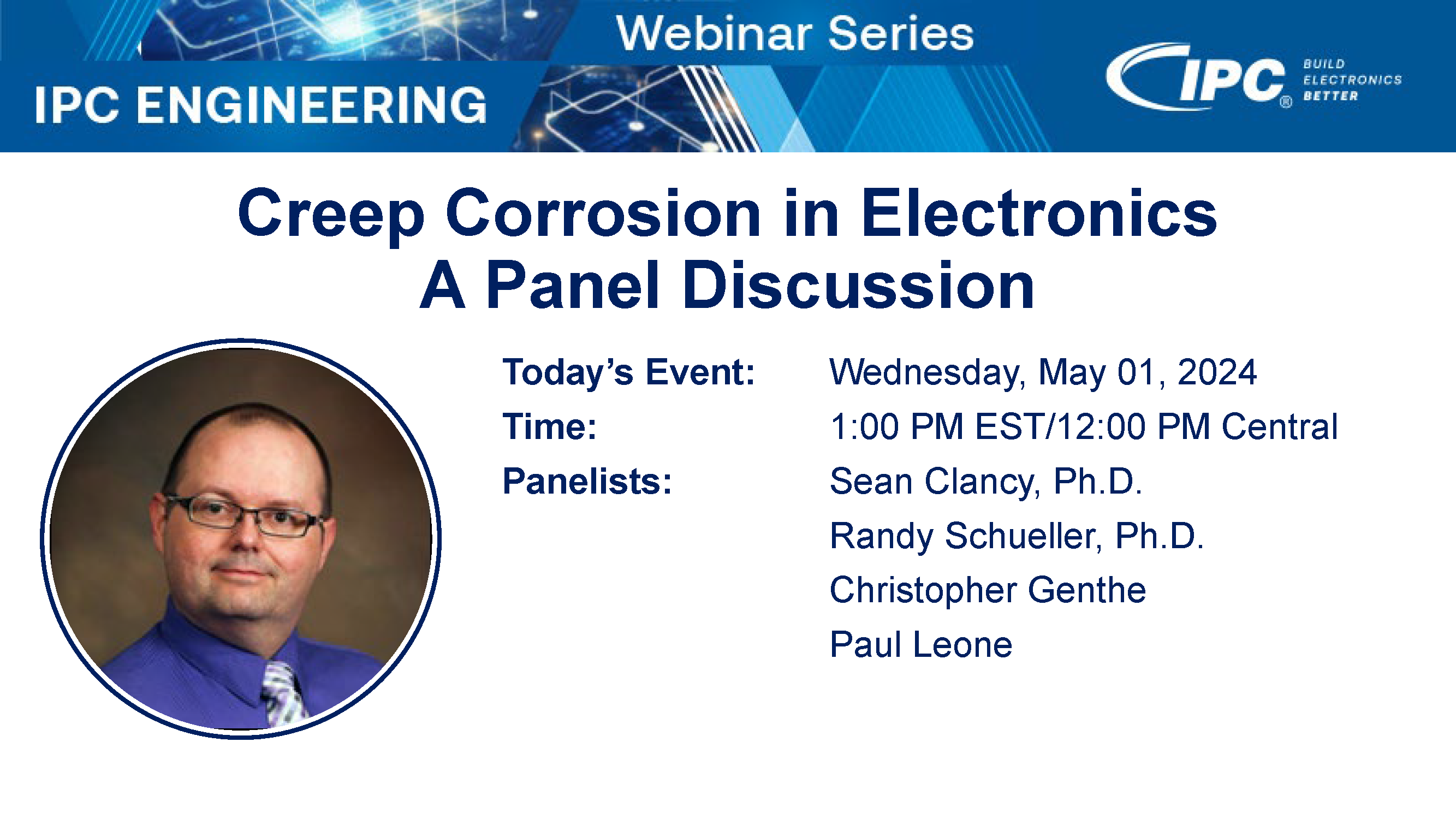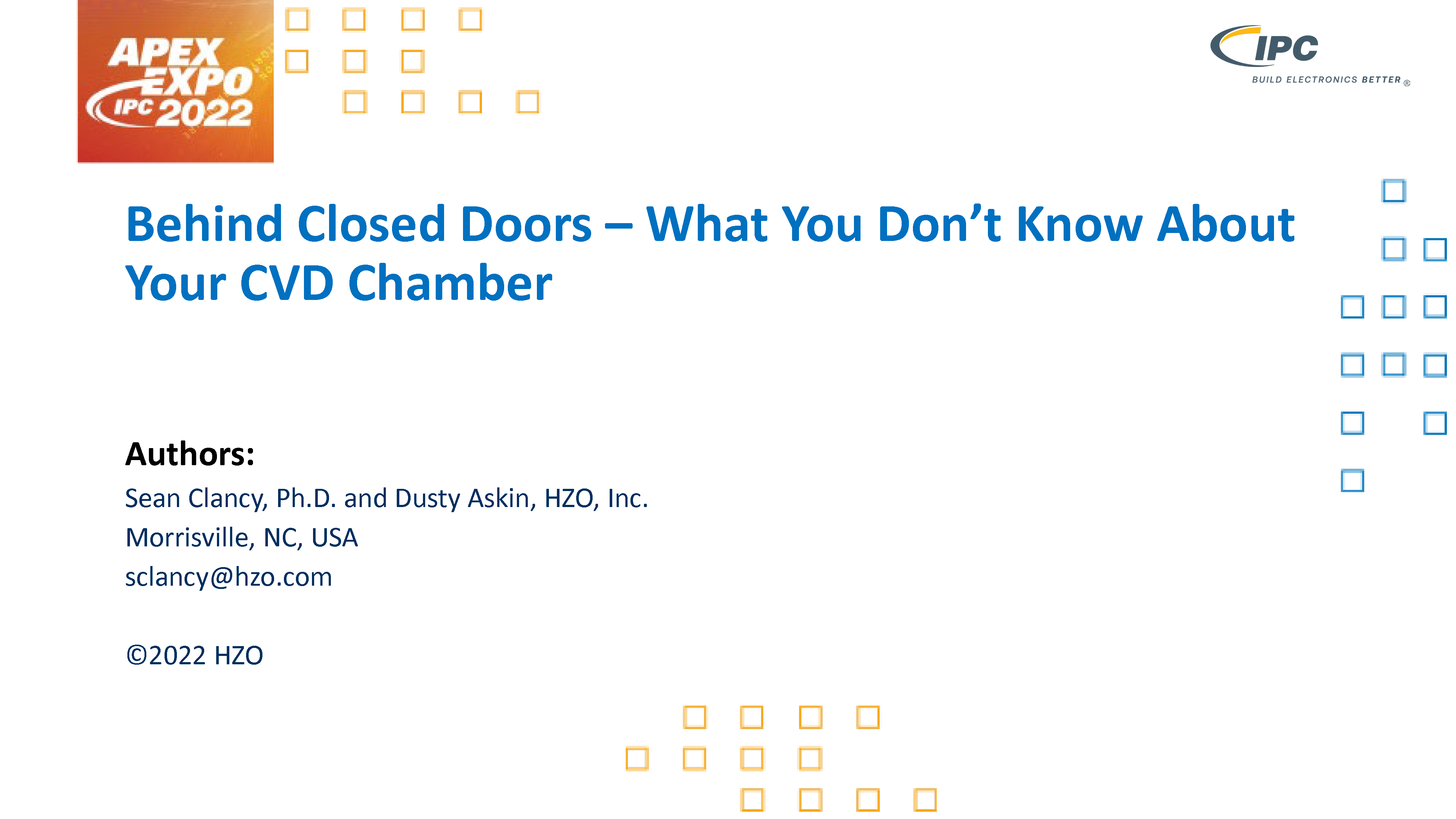Talks
“Materials Performance, AMPP Interview Series” Podcast: “Corrosion in Electronics: Common Causes and Solutions”
Podcast episode description:
HZO Inc. is a provider of conformal coatings solutions for electronics and other products made for a variety of markets ranging from consumer electronics, medical devices, aerospace, semiconductors, and more. In this sponsored episode, Sean Clancy, Ph.D.—Senior Director of Materials Science at HZO—shares industry insights gained from many years of performing root-cause failure analysis in these products and markets.
IPC Engineering Webinar Series: “Creep corrosion in electronics: A panel discussion”
Webinar abstract:
A group of industry experts will discuss the evidence of the root causes of creep corrosion, relevant testing, and effective mitigation strategies available to prevent creep corrosion failures in electronics. Fundamentally, creep corrosion is the product of the reaction of copper with sulfur, which may be mitigated with manufacturing processes, such as the printed circuit board solder mask and surface finish, conformal coating, and enclosure levels, as well as during end use operation, such as filtration. Several types of harsh environmental test methods that are used to evaluate for product susceptibility to creep corrosion will also be reviewed.
“Reliability Matters” Podcast: “Episode 52: A Conversation with Conformal Coating Expert Dr. Sean Clancy of HZO”
Podcast episode description:
Dr. Sean Clancy and Mike Konrad discuss the various types of conformal coatings designed to protect circuit assemblies from moisture and other hazards. They discuss coating best-practices and current IOT-based products that are increasing the need for protecting circuit assemblies from harsh environments.
IPC Engineering Webinar Series: “Creep corrosion in electronics: A panel discussion”
Abstract for the paper and presentation:
*Purpose: One of the challenges of larger Parylene chemical vapor deposition (CVD) chambers is what seems to be unpredictable material behavior throughout the working volume. The tight parameters on the state of the substrates, adhesion promoter, and Parylene deposition process require informed engineering, even when industry best practices produce problematic distributions of materials.
Results: Transient electrical failures, among other unexpected behavior, that recover over time can be influenced by the method of adhesion promoter introduction, the volume of adhesion promoter used the state of cleanliness of the substrates, the total volume of substrate outgassing, circuit design as well as other factors. Related case studies on the effects of the state of the substrate and conditions before and after coating will be addressed. With very similar products, the same process has worked without issue, countless times.
Outcome: Controlled experiments that vary each of the critical factors have shown how they affect the coating process and product performance. Cross-sectional analysis, FTIR spectroscopy, adhesion tests, process modifications, and substrate concerns will be discussed to illustrate how high-reliability products can be produced in a high-volume manufacturing process using Parylene conformal coatings.*
Back to top

